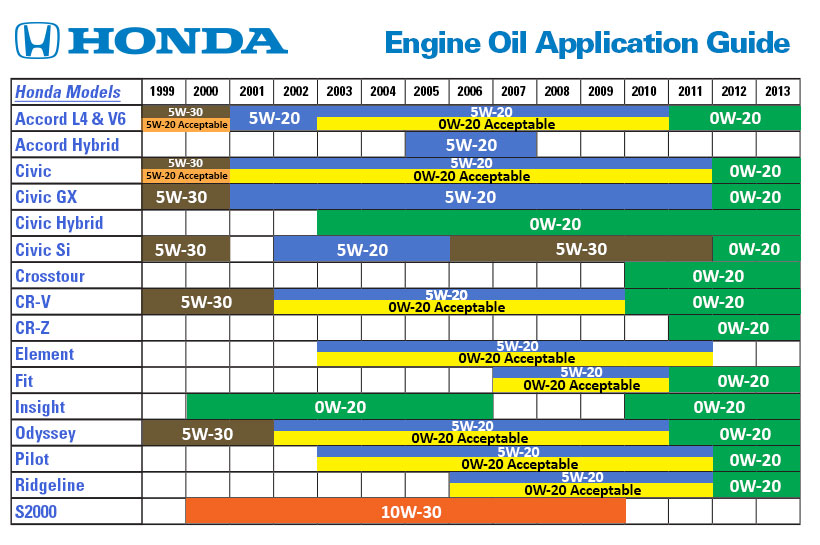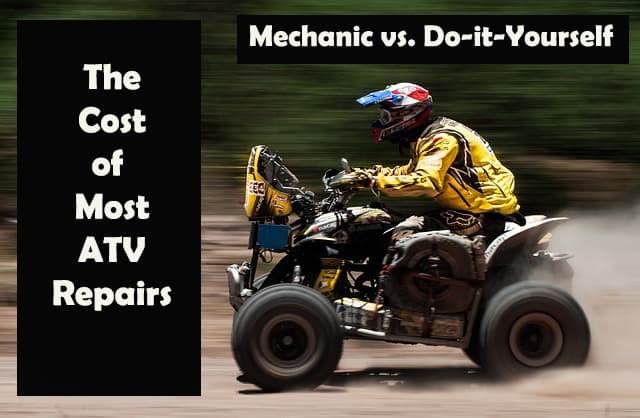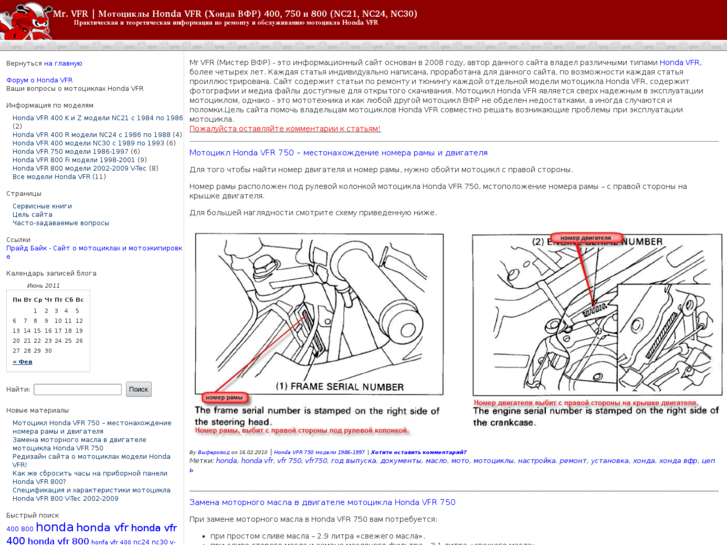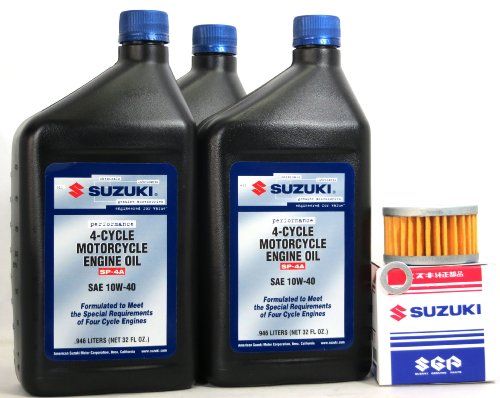Look after your ATV and it will look after you.
The purpose of maintenance is to keep your Honda in the best possible operating condition.
But remember that your Honda Authorised Dealer knows your Honda best and is fully equipped to maintain and repair it. To ensure the best quality and reliability use only new Honda genuine parts or other equivalent for repair and replacement.
The times listed below are based on average riding conditions. Some items will need more frequent service if you ride in unusually wet or dusty conditions or at full throttle. Consult your Honda Authorised Dealer for recommendations applicable to your individual needs and use.
Before every use
After 20 hours or 100 miles / 150 km
Every 50 hours or 300 miles / 500 km
Every 100 hours or 600 miles / 1000 km
Hello! I’ve been using my ATV a lot and I think it’s probably time for an oil change. Can you tell me what kind of oil a Honda Rancher 420 should take?
Can you tell me what kind of oil a Honda Rancher 420 should take?
Heather Bernhard · Answered on Apr 07, 2022
Reviewed by Shannon Martin, Licensed Insurance Agent.
I’m glad you’re practicing some preventative maintenance! It’s essential to take care of your ATV if you want to keep it running well for a long time.
Honda GN4 10W-30 4-stroke motorcycle oil is a great choice for your ride. Any 10W-30 or 10W-40 motorcycle oil will work if you can’t find that.
You should never use car oil in your Rancher. It will make the clutch slip and wear out faster than usual.
Honda recommends changing the oil in your Rancher every 12 months, 100 hours, or 600 miles: whichever comes first.
Have fun four-wheeling—but before you hit the trails, have you thought about your insurance?
Many car insurance companies like Progressive and Allstate offer ATV insurance. Jerry can help you compare rates and coverages and even bundle your ATV and car insurance for the biggest savings possible.
Jerry can help you compare rates and coverages and even bundle your ATV and car insurance for the biggest savings possible.
Jerry is your ultra-talented car insurance broker for life. No need to sit across from him at a desk: Jerry is an app! It takes less than a minute to sign up, and you’ll be presented with competitive rates from dozens of top providers. Don’t lose coverage—find savings with Jerry.
MORE: How to get motorcycle insurance
HondaCar Maintenance
View full answer
WHY YOU CAN TRUST JERRY
Jerry partners with more than 50 insurance companies, but our content is independently researched, written, and fact-checked by our team of editors and agents. We aren’t paid for reviews or other content.
Browse More Content
Trunk Latch Adjustment
Drive Belt Tensioner Replacement
Intake Manifold Runner Control Replacement
Inspection for Car Getting Worse Gas Mileage
Car Shift Inspection
Mitsubishi Eclipse Spyder Gts Insurance Cost
Bmw Activehybrid 3 Insurance Cost
Bmw 230I Insurance Cost
Volvo 240 Insurance Cost
Bmw 330 I Insurance Cost
Lakewood Car Insurance
Lynwood Car Insurance
Socorro Car Insurance
Jurupa Valley Car Insurance
Circleville Car Insurance
I’m in high school and just got my driver’s license, so my mom is giving me her old Honda to drive to school. What kind of interior features does a 1996 Honda Civic have?
What kind of interior features does a 1996 Honda Civic have?
Natalie Todoroff
Apr 07, 2022
Now that I own my 2015 Nissan Altima free and clear, I would like to save a few bucks by doing some of the regular maintenance myself. I am ready to take on the oil change, but I can’t read the oil cap to see what to use. What kind of oil does a 2015 Nissan Altima take?
Lynell Spencer
Apr 07, 2022
It hadn’t rained in a while, but yesterday when I was commuting home, the rain started pouring down. Naturally, I turned on my windshield wipers… and they are totally wrecked, streaks and everything. How do I change the windshield wiper blades on my Audi Q5?
Jessie Devine
Apr 08, 2022
Browse All Questions
The 2017 Honda Accord Sport is ever-so-slightly more powerful than the base trim, but it won’t bring the performance specs of the top Touring trim.
Olivia Rose
Jun 27, 2022
Infiniti doesn’t currently offer any electric vehicles, but Nissan’s luxury arm has teased an EV for 2025, and more down the road.
Olivia Rose
May 25, 2022
The Bengies Drive-In Theatre outside of Baltimore is the only surviving drive-in movie theater in Maryland.
Olivia Rose
Jan 06, 2022
Colorado
Progressive
Celebrities
Chevrolet
Liability insurance
Mercury
Motorsports
Deductibles
Cruise Control
Car Insurance Rates
Scooters
Bad Credit
Bodily Injury
Home and Auto Insurance
Car Knowledge
Bill of Sale
Toyota
Liberty Mutual
Jumpstarting
Driver's Permits
Porsche
Vandalism
Insurance Adjusters
Auto Sports
Distracted Driving
Muscle Cars
No long forms
No spam or unwanted phone calls
Quotes from top insurance companies
Find insurance savings — it's 100% free
Toyota
Hyundai
Mercedes-Benz
Subaru
Chevrolet
Mitsubishi
How often should you change the oil in your motorcycle? The answer to this question is not as obvious as it looks in the instruction manual . .. After all, the conditions of this very operation can differ, and quite significantly, starting from the region where the equipment is used and ending with the driving style of a particular owner.
.. After all, the conditions of this very operation can differ, and quite significantly, starting from the region where the equipment is used and ending with the driving style of a particular owner.
In addition, the road infrastructure is also of considerable importance (compare, for example, the unlimited autobahns of Germany and the road network of Karelia, where primers are quite common). nine0003
Invaluable helpers in this delicate matter will be the oil dipstick and sight glass in the crankcase of your motorcycle. Or a transparent tube, as is done on some KTM motorcycles.
Visually assessing the condition of the filled oil and the degree of its consumption is still the best and safest means of control. After all, sometimes the on-board computer optimistically informs you about the next oil change only after 5,000 kilometers, and before your eyes you have a black substance at the “Min” mark on the dipstick. nine0003
nine0003
In theory, everything is simple - there are factory recommendations, they must be followed ... But often this is not entirely true, because these calculations are true for some, let's call them, let's say, ideal load conditions on the internal combustion engine - average tachometer speeds, incompletely open throttle valve, no engine overheating.
But such greenhouse conditions do not always coincide with real ones: one must not only mindlessly follow factory instructions, but proceed from objective factors and, if necessary, shorten the oil change period. nine0003
Driving on mountainous or heavily dusty terrain, enduro rides or daily city shootings on sportbikes with the tachometer screwed out to the red zone and balancing on the rear wheel, thoughtful crawling in traffic jams with the cooling fan constantly on - this is not a complete list of situations, not coinciding with the data perfectly verified by marketers from the “official” health book of your motorcycle.
By the way, the history of low mileage and gentle operation also has its own nuances. After all, oil is a chemical compound that can oxidize and degrade over time, so even if you haven’t “rolled out” the prescribed kilometers, then after a year it needs to be replaced. nine0003
Yes, in modern expensive oils, such as, for example, semi-synthetic and synthetic Elf oils, the proportion of polyalphaolefins (PAO) or esters in the composition can reach up to 15-20%, they have excellent viscosity and lubricity properties, but their the resource is finite. So to believe that after 10,000 kilometers of run their properties have not changed in any way is at least naive.
Some explanation: polyalphaolefins are synthetic hydrocarbon compounds. Synthetic oils based on polyalphaolefins have a high viscosity index, they do not contain linear paraffin molecules, but the lubricating properties of polyalphaolefins are low, so they are used only as one of the components in the creation of oils. nine0003
nine0003
Esters are esters obtained by esterification with alcohols of carboxylic acids obtained by hydrolysis of vegetable oils (rapeseed oil or coconut copra oil).
The main plus of oils with esters is the strength of the oil film formed by the ester-based lubricant, which is 22,000 kg per square centimeter. This far exceeds that of PAO oils (conventional synthetic oils).
The oil change interval in a motorcycle engine, as mentioned above, can vary greatly. If you have NOT sports equipment subjected to overload, where changing the oil after each race is a common occurrence, then it is better to keep the average maintenance interval in the region of 5000-7000 kilometers. No matter what the factory labels say.
By the way, ELF also has special oils for such equipment, designed for professional use in motorsport:
If we talk about sportbikes in general, the company has a whole line of high-quality synthetics for them:
Of course, everything is individual, for example, powerful cruisers with large-capacity engines, operated mainly on the highway in the speed range up to 120-130 km/h, will easily endure an oil change every 12,000-15,000 kilometers. For this class of motorcycles, the following ELF oils are best suited:
For this class of motorcycles, the following ELF oils are best suited:
Another question is that any oils lose some of their properties by such a run. And the same large-capacity "air vents" really do not like overheating, after which even the highest quality oil will be suitable for only one thing: immediate replacement.
In any case, mediocre fuel (and there is still enough of this in our open spaces) forms carbon deposits during combustion, gradual oxidation of the oil, burnout of additives ... All this leads to increased loads on the piston group, transmission units, and, as a result, to resource reduction. nine0003
The main thing to understand when it comes to oil change frequency is the four main aspects that oil is responsible for.
 In addition, often in the cooling systems of motorcycles (not only sportbikes) there is also an oil cooler, through which the oil, being cooled, again enters the parts that experience frictional loads. nine0008
In addition, often in the cooling systems of motorcycles (not only sportbikes) there is also an oil cooler, through which the oil, being cooled, again enters the parts that experience frictional loads. nine0008 True, new motorcycles often change their owner after a season or two, and, knowing in advance about such prospects, the first owner can save on the frequency of change, knowing full well that the engine resource will be enough for his share. nine0003
One of the most serious problems can be cranking of the connecting rod bearings. The more "tired" the engine oil is, the faster the oil passages become clogged. The connecting rod bearings are exposed to excessive loads, which means heating, which leads to their rotation.
The more "tired" the engine oil is, the faster the oil passages become clogged. The connecting rod bearings are exposed to excessive loads, which means heating, which leads to their rotation.
Of course, this is an extreme case, but a “planted” resource, lower compression and developed power, greater heat load while saving on engine oil changes will be guaranteed companions of your power unit. nine0003
In such a scenario, each subsequent owner bears great risks, almost like in a financial pyramid, the chain of luck will break on one of the next “lucky” investors. That's why aftermarket shopping is always a lottery, and that's why we overpay for new appliances.
In this regard, the acquisition of high-quality engine oil is a very important task. Total has been in the motor oil market for more than 50 years and has been one of the world's leading brands, and its Elf brand has a full line of motorcycle oils, ranging from purely racing products to a mineral line, as well as various motorcycle chemistry. Separately, it is worth mentioning a wide range of oils specially created for two-stroke engines:
Separately, it is worth mentioning a wide range of oils specially created for two-stroke engines:
The company also has two largest research centers in France and India, participation in the world's most prestigious racing series such as MotoGP and WSBK, which certainly gives impetus to the development of technologies, and cooperation with global automakers: Renault, Nissan, Dacia and Datsun.
Of course, all products meet the key ISO, API and JASO certification standards. And the motorist just needs to choose the ELF product corresponding to his class of equipment and, of course, do not forget that nothing is eternal. nine0003 Z900RS
How often do you change the oil in your car? Most likely as recommended by the manufacturer. How does he recommend? Europeans and Koreans, as a rule, once every 15,000 km (it used to be once every 20,000 km), and the Japanese - once every 10,000 km. But this is in Russia. And how do they do it themselves in Japan?
But this is in Russia. And how do they do it themselves in Japan?
The original plate under the hood of the Japanese Rav4 crossover with a naturally aspirated engine says to change the oil every 15,000 km (or once a year). And in difficult conditions - once every 7500 km (or once every six months, depending on what comes first). nine0003
What are these difficult conditions? Based on excerpts from manufacturers' websites (both Toyota and Volkswagen are in solidarity here), difficult conditions are short trips (less than 8 kilometers), frequent cold starts, operation in regions with extremely low temperatures, frequent operation with a full load, roof box or trailer, dusty roads, intensive use (for example, taxi, delivery, patrol car), frequent long idling (traffic jams, long warm-up, again taxis and patrol cars), dusty roads, use of diesel fuel with a high sulfur content. nine0003
Read also
6 habits of drivers to get rid ofHow we, without knowing it, accelerate the wear of the car
If you think about it, then Russia is all about harsh operating conditions. That is why Toyota reduces the oil change and service interval to 10,000 km. However, we rarely hear or see a mention of cutting the oil change interval in half in heavy use. Although the rules are still the same. That is, in a good way, most Russian drivers are recommended to change the oil every 5,000 km. nine0003
That is why Toyota reduces the oil change and service interval to 10,000 km. However, we rarely hear or see a mention of cutting the oil change interval in half in heavy use. Although the rules are still the same. That is, in a good way, most Russian drivers are recommended to change the oil every 5,000 km. nine0003
By the way, here is an excerpt from ELSA (a kind of manual for Volkswagen dealers). The list of countries with dusty roads includes Russia, Ukraine, Belarus, Kazakhstan, and many other countries. Don't believe? Leave the car at the entrance for at least a week and see what a layer of dust is on it.
Now, attention! For turbocharged engines, Toyota has a completely different regulation: 5000 km or once a year under normal conditions and once every 2500 km or once every six months under severe operating conditions. nine0003
Just guess. If you follow Russian instructions, then for 150,000 km the oil in a turbo engine of some VW will be changed 10 times, and if you follow Japanese instructions, then 30 times. There is a difference? Obviously. in which case the motor and turbine will last longer? What is the secret of Toyota's reliability? That's right, including the frequency of service.
There is a difference? Obviously. in which case the motor and turbine will last longer? What is the secret of Toyota's reliability? That's right, including the frequency of service.
And one more interesting point. It is recommended to change the oil filter not every time you change the oil, but every other time.
With diesel engines, everything is the same. Only Russia, in addition to all of the above, also belongs to a country with diesel fuel, in which there is a high sulfur content. You can check with the same ELSA. nine0003
Nissan in Japan also has a division into naturally aspirated and turbo engines. The regulations are the same as those of Toyota: once every 10,000 km or once a year for atmospherics, and once every 5,000 km for turbo engines under normal conditions. And in difficult conditions twice as often!
Honda. Once every 15,000 km for atmospheric engines in normal conditions and once every 7,500 km in severe conditions. But this regulation with the proviso that high-quality engine oil will be used. If the oil is ordinary, then once every 10 and 5 thousand kilometers, respectively. nine0003
If the oil is ordinary, then once every 10 and 5 thousand kilometers, respectively. nine0003
Turbo engines again have higher oil change requirements. Once every 5,000 km or once every six months - without reference to operating conditions.
Everything is simpler with Subaru. It is allowed to change the oil once every 10,000 km or once a year, but the footnote says that it is better to reduce the interval to 5,000 km and once every six months for all types of engines.
Read also
Forgotten tricks of Soviet drivers How to revive a car with pantyhose, laundry soap and aspirin types of motors and operating conditions. The oil filter should be changed every 10,000 km. The Japanese do not have any interservice runs of 15,000 km, as in Russia. nine0003
First, it is obvious that marketers rule the ball in Russia. The less frequent oil changes and maintenance, the lower the operating costs. And this is exactly what buyers need, since Russian laws are too soft and allow not to tell the truth, as in Japan.
Or does anyone think that Japan has harsher operating conditions? Or maybe the oils for the Japanese market are of some poor quality (if you really think so, then no, the oils there are the same as all over the world). And this is all against the background of the fact that in Japan they are very careful about the environment, they should, in theory, be recommended to change the oil less often so that there is less pollution. nine0003
Secondly, it is obvious that the oil change interval should be halved under severe operating conditions. And in Russia, the vast majority of cars either stand in traffic jams, or drive short distances, or idle for a long time, or often start up in the cold, and so on. Not to mention the dust on the roads and sulfur in diesel fuel.
Third, turbo engines need more frequent maintenance. This is by the way about why Toyota engines run longer than VAG engines, and why, in general, the engine life has decreased with the advent of downsizing in our lives.